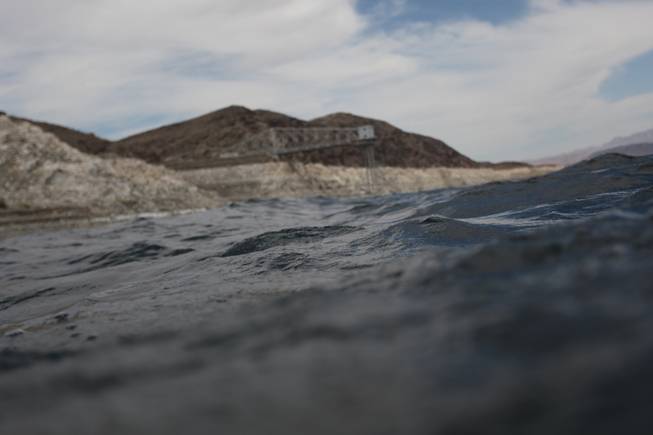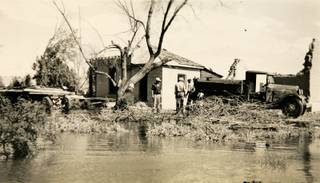
An intake at Boulder Harbor at Lake Mead rises out of the water. The white coloration on the rock along the shoreline indicates where the water level once was.
Thursday, March 10, 2011 | noon
Special coverage
It is nearly a certainty that extra water will flow into drought-plagued Lake Mead this year, according to the latest projections from the U.S. Bureau of Reclamation.
The bureau reported in January that increased snowfall in the Rocky Mountains -- more than 30 percent above historical levels -- could lead to more water for the lake if Lake Powell's water level rose to 3,643 feet by April 1.
That would trigger the release of an extra 3.13 million acre-feet of water into Lake Mead, officials said, pushing the lake's surface level up 20 feet or more.
Earlier this week, the agency updated its projections and estimated there is a 97 percent chance that Lake Powell will reach the 3,643-foot threshold. In January, the bureau had projected a 76 percent chance.
Only a historic plunge, 2.1 million acre-feet, in forecast water volumes for Lake Powell would prevent the extra water from flowing, officials said.
The forecast has dropped that far only once in 32 years.
As part of the Colorado River Compact, Lake Powell annually releases 8.23 million acre-feet of water into Lake Mead. According to agency statistics, if the higher threshold were reached at Lake Powell, a total of 11.36 million acre-feet of water or more would flow into Lake Mead by September.
Andrew Munoz, spokesman for the Lake Mead National Recreation Area, said 100,000 acre-feet is equal to about 1 foot of elevation on the lake. If 3.13 million additional acre-feet of water was pumped into the lake at once, the surface level would rise more than 30 feet.
Munoz cautioned, however, that the water would be released gradually so the total change in water level would likely be less, especially when factors like evaporation were incorporated.
Officials said it’s still good news for Lake Mead, where water levels have dipped significantly in recent years. Since the drought struck the Colorado River Basin in 1999, Lake Mead has dropped to historic lows, dipping to 1,082 feet in October and forcing the closure of several boat launch ramps. When full, the lake should be at 1,220 feet.
Less snow has accumulated since the drought began. Last year, Munoz said accumulation was about 20 percent below the historical norm.



Join the Discussion:
Check this out for a full explanation of our conversion to the LiveFyre commenting system and instructions on how to sign up for an account.
Full comments policy